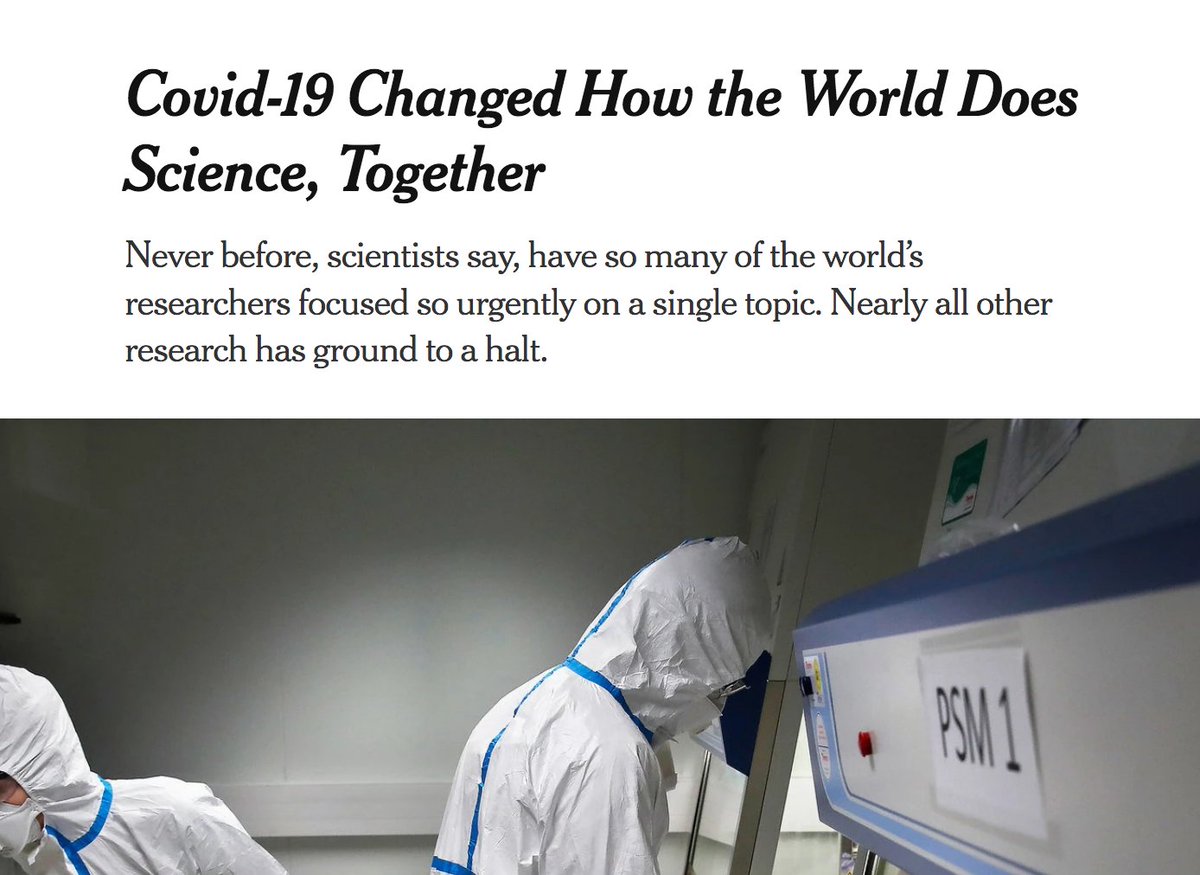1/5 NYT describes the intense global scientific collaboration happening in response to COVID. In fact, it& #39;s not really new - a key backbone for it is a WHO virus sharing network that I studied for years. Paper here: https://papers.ssrn.com/sol3/papers.cfm?abstract_id=3066162">https://papers.ssrn.com/sol3/pape...
2/5 The paper describes the logic of open science, and why it is more effective than market-based responses for certain kinds of problems. It& #39;s a political economy of science account that can also help us think about the limits of markets and IP in world of COVID.
3/5 The WHO flu network is really the template for this new surge of global collaboration. It was through the global flu platform GISAID that the first covid virus sequences were shared, and it continues to be the platform for much of this sharing. https://www.gisaid.org/ ">https://www.gisaid.org/">...
4/5 Though many argue that patents, IP are essential drivers of scientific innovation, the flu network shows that these can also undermine open science. And that diff rules - requiring sharing, credit, and distribution of vaccines and tx globally - are needed to sustain it.

 Read on Twitter
Read on Twitter


